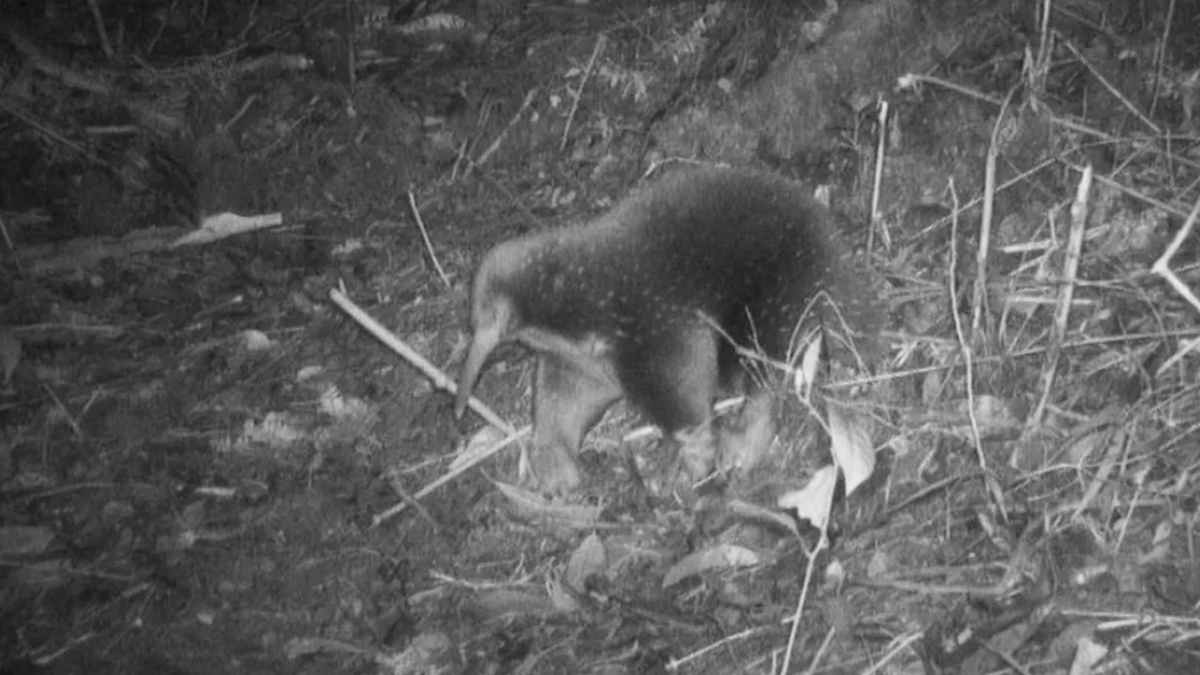The explorers had nearly wrapped up their journey when a small camera perched deep in the forest caught something unexpected. One moment, it was just quiet leaves and tangled vines. Then, a tiny, spiny, and oddly shaped mammal shuffled past, completely unaware that it was about to shake up decades of lingering questions and doubts.
A second chance at discovery
This animal, a peculiar egg-laying mammal thought to have disappeared from sight for six long decades, was spotted on the last day of a four-week expedition in the Cyclops Mountains of eastern Papua, Indonesia.
For more than half a century, no one had seen this creature alive in the wild. Many suspected it had slipped quietly into extinction. Now, new evidence shows it hanging on in the thick tropical forest of a place most people will never visit.
James Kempton from the University of Oxford, who worked with local specialists on this project, confirms the location as far from any roads or villages, making it the sort of habitat where a secretive, shy species could hide for a very long time.
How the team never gave up
The scientists leading this effort included a group of 25 people who spread more than 80 camera traps across a wide area of rugged landscape. They scrambled up steep slopes, pushed through dense foliage, and endured heat and humidity. With limited time and supplies, every day mattered.
The rediscovery happened right at the end when the team was checking the last memory cards. Most of them showed nothing new—just leaves, insects, and maybe a curious bird. Only when the group was on the verge of packing up and calling it a day did they see this rare creature strolling casually through undergrowth.
The scientists, after all their sweat and patience, had a reason to celebrate. In the words of the researcher who helped check the final cards, “it was necessary to go through every last SD card in the camera traps to find evidence of the animal” explained James Kempton, biologist from the University of Oxford (BBC News, 2023).
The surprising identity
This mammal, known as Sir David’s long-beaked echidna (Zaglossus attenboroughi), also called Attenborough’s long-beaked echidna, is a close relative of the platypus.
Its looks are quite unusual. The creature wears hedgehog-like spines, has an anteater-like snout, and sports mole-like feet built for digging. It is one of just four known species of echidna, and three of these are in a sub-group known for their long beaks.
Monotremes, the group that includes echidnas and platypuses, trace their origins back to a time when dinosaurs roamed, with some estimates suggesting their ancestors emerged around 200 million years ago (Dickman, 2007).
Deep in the Cyclops Mountains
The search took place in the summer of 2023. The Cyclops Mountains rise in a dense sweep of green about 6,500 feet above sea level. The team covered more than 77 square miles of tricky terrain that tested their stamina and determination.
Along the way, they turned up new insects, frogs, and even a crustacean that had not been documented there before. None of these finds overshadowed the echidna, though. That tiny, prickly survivor was the real star of the show. Its rediscovery is a bright sign that this unusual species is still holding on to life in pockets of remote habitat (IUCN, 2021).
No change in danger status
As remarkable as this finding might be, it does not mean the echidna has bounced back from its precarious situation. It remains critically endangered, a label assigned by the International Union for Conservation of Nature, which keeps careful track of the world’s most threatened species (IUCN, 2021).
Population sizes for creatures like this can be hard to estimate, but experts suspect numbers remain low, and continued efforts to protect these habitats will be needed to ensure its survival.
A symbol that matters to people
This echidna is more than just a quirky mammal with ancient roots. According to local groups who worked alongside the scientists, the animal holds cultural significance. In nearby communities, it is part of a legacy that ties people to the natural world around them.
Cultural traditions can sometimes include resolving conflicts through ceremonies that honor native wildlife. For them, a small spiny echidna is not just a creature in the undergrowth. It is part of the stories and values that shape daily life. The importance of keeping such traditions alive might encourage more people to take notice and care about species on the edge.
The challenge of protecting a hidden gem
Conservationists know that rediscovering a species is just the first step. Once an animal has slipped off the radar, it usually means something in its environment has changed for the worse. It might be hunting, habitat destruction, or the arrival of invasive species.
Saving it from slipping away entirely often requires that policymakers, local communities, scientists, and conservation groups roll up their sleeves and figure out how to protect what remains. This part of the world is filled with biological surprises, and safeguarding them makes sure human beings do not lose that precious variety of life.
Chipping away at uncertainty
The scientists who confirmed the echidna’s existence again have given us a reason to believe that even after many decades, nature can still hold a few surprises up its sleeve. Cameras and patient efforts have opened a small window to a secretive world.
There are questions that remain unanswered about the species’ habits, numbers, and exact distribution. Researchers will likely keep returning, with better tools and sharper questions, hoping to understand what it takes to keep this echidna around for another generation. These are the kinds of mysteries worth solving, especially when the stakes are this high.







